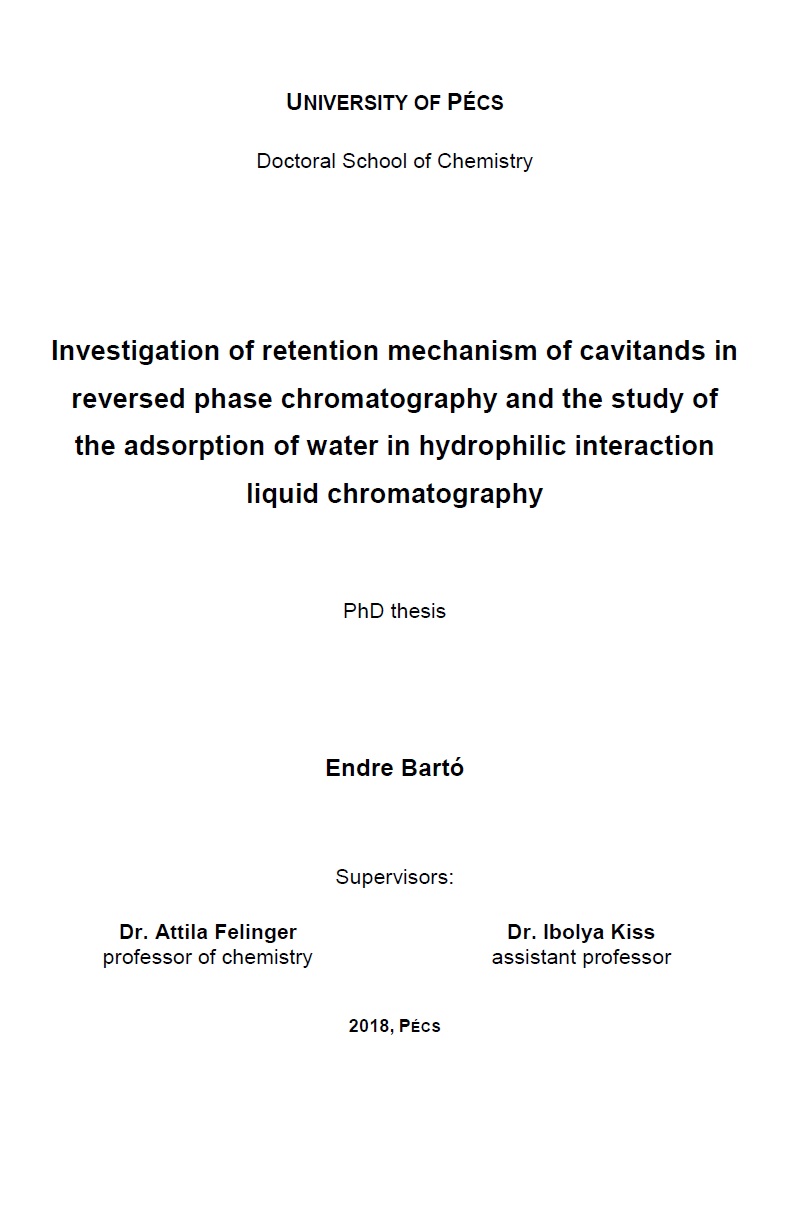Investigation of retention mechanism of cavitands in reversed phase chromatography and the study of the adsorption of water in hydrophilic interaction liquid chromatography
Abstract
The chromatographic behavior of large molecules such as resorcinarene-based cavi-tands is an unexplored field of liquid chromatography. The retention behavior de-pends on the structure of the analyte and the quality of the mobile and stationary phases inclusive of the functional groups of the solute and stationary phase. The en-thalpy and entropy changes are estimated by analyzing the temperature dependence of k. The linear van’t Hoff plot suggests that the retention mechanism for the analyte is constant over the temperature range studied. The retention mechanism is very complex so linear chromatography does not give detailed information on it. With non-linear chromatography, the adsorption isotherm of the analyte can be determined by the overloading experiments. For the determination of the adsorption isotherms, the most commonly used methods are the frontal analysis. However, the inverse method is popular too, due to the lesser solute consumption and reduced experimental time. It is a numerical method for isotherm determination and estimates adsorption iso-therm parameters by fitting simulated elution profiles to experimental ones.
In reversed-phase liquid chromatography the influence of pressure on retention as-suming constant flow rate arises from many sources, which include the expansion of the column tube, the compressibility of the mobile and the stationary phases, the change of the partial molar volume of the analyte and structural alteration of the al-kyl-bonded layer of the silica. The change of molar volume of the analyte is associ-ated with its passage from the mobile to the stationary phase. If the molar volume change is negative, i.e. the solute has a smaller volume in the stationary phase than in the mobile phase the retention of the analyte should increase with pressure ac-cording to the Le Chatelier’s principle.
It is generally agreed that in HILIC the retention mechanism involves mostly partition-ing between the largely organic mobile phase and a water-rich layer mobile phase on the surface of stationary phase. The water uptake from acetonitrile-water (ACN:H2O) mobile phases can be studied the by frontal analysis using coulometric Karl-Fischer titration. There is no fixed boundary between the adsorbed water-rich layer and the bulk mobile phase. Thus, the amount of water in the stationary phase can be ex-pressed as the volume fraction of excess adsorbed.

